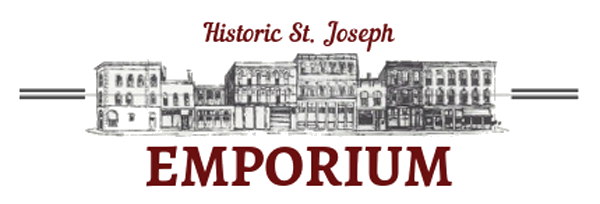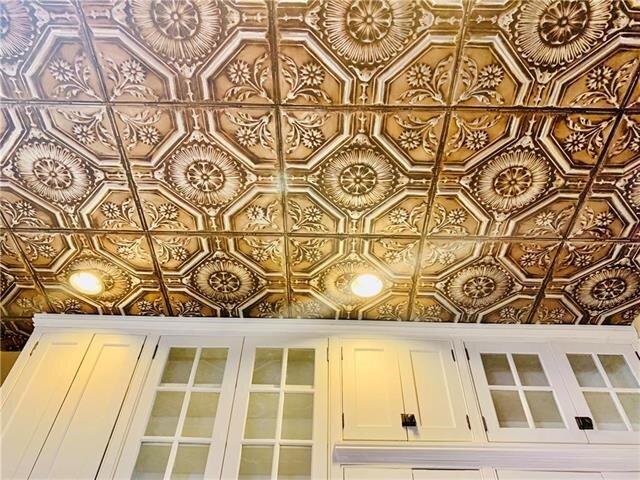Purchase Price $139,000
2 bed · 2 bath · 1,340 sqft
Contact: Lisa Rock at Re/Max Professionals
Call: 816-262-8462
House History & Gallery
The absolutely charming Pleasant Chesnut Cottage at 1306 Francis was built in 1877 by Civil War veteran turned grocer, Pleasant Chesnut for his new bride Allie Kerby. Chesnut, a Kentucky native, served in the Confederate Army for the whole of the war and moved to St. Joseph once the fighting had ended. He was only 25 when he came here in 1865 and went in to the grocery business.
Pleasant and Allie’s wedding on Dec. 20, 1877 was big news in St. Joseph. The couple was married at her mother’s house on 8th Street, but as the newspaper noted: “One of the prettiest and coziest cottage residences in all St. Joseph has been recently completed at the southeast corner of Thirteenth and Francis streets, and here Mr. and Mrs. Chesnut propose to make their future residence. It is tastily and elegantly furnished and fitted up, and to this bright little abode, after spending a few hours socially with their friends last night, the newly married couple were conveyed in a carriage.”
This pretty and cozy residence was home to the couple for the entirety of their married life. They raised their children Guy, Kirby, and Helen there. The children attended Garfield and Franklin Schools, which were in the neighborhood. Pleasant died of “a complication of diseases” at the house on Nov. 6, 1907. Following his death, Allie continued to live at the house with her son Guy, his wife Annie L. and their son Guy Jr.
The house remained in the family until about 1929. At times it was home to Kirby and his wife Ada. Kirby had served in World War I in Company B, 140th Infantry between 1917 and 1919. Following the war, he worked in county offices until his poor health forced his retirement and he moved to Los Angeles where he died in 1939.
Other times, Guy lived there. Guy was a prominent figure in St. Joseph, having served as judge of the First District of the Buchanan County Court. Following his graduation from Central High School Guy went to work for the Noyes-Norman Shoe Company for $15 a month. He then went in to business with his father in 1898 in the family grocery on the corner of 9th and Olive. Following Pleasant’s death, Guy sold the business and went to work for the St. Joseph Gas Company and other utilities. In 1931 he was elected as county judge as a Democrat. Guy died in 1938 at age 59.
For a short time in the early 1930s, after the Chesnuts had left the house, 1306 Francis was occupied by Hugh Fitzpatrick, his wife Louise Woellner Fitzpatrick, and her father Emil G. Woellner. Hugh was a plumber with a shop at 1725 Frederick Avenue. He married Louise in October, 1922 and with that marriage he gained a live-in father-in-law, the German born butcher Emil G. Woellner who died in 1930, shortly after moving in to 1306.
When the Fitzpatricks left the house in about 1932, the new resident certainly gave the neighbors something to talk about over the fence. In 1933, the seemingly respectable middle-aged woman who worked as a millinery clerk in one of the retail stores downtown gave her name as May M. Feinstein. In fact, Feinstein was her step-father’s name, and May had gained some notoriety in 1917 under her married name, May Skolnik. May married Joseph Skolnik, a paperhanger and a relatively recent Russian immigrant (he came to the U.S. in 1907) who had a nasty reputation. In 1917, she went for a ride in the car of her brother George, and Joseph disapproved and attacked her in a drunken rage when she returned. Her brother defended her and hit Joseph on the head with a shoemaker’s hammer – hard. Initially, the newspapers believed that Skolnik would die, but he did recover. In fact, he recovered enough that in 1920 he attacked a man in the Southside over illegal liquor. By the time May moved in to 1306, she and Joseph were living apart (it is unclear if they were divorced or simply separated) and she lived quietly.
For much of the 1940s, Cleveland B. Henderson and his wife Vina S. Totzke Henderson lived here. Cleveland was an auto mechanic who worked for various car dealers and garages around the city.
The Pleasant Chesnut Cottage is in a Local Historic District and a National Register Historic District and thus is eligible for local and national grants.

















